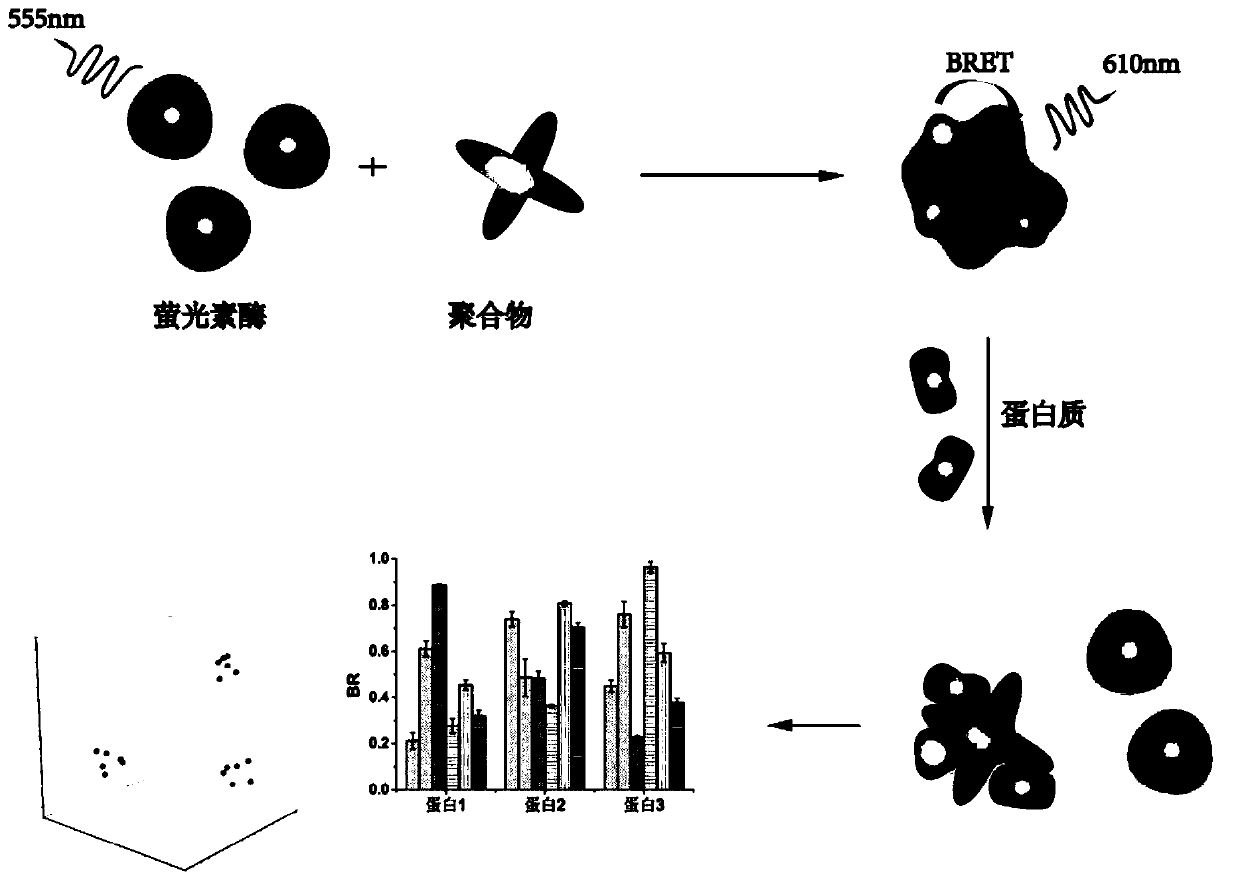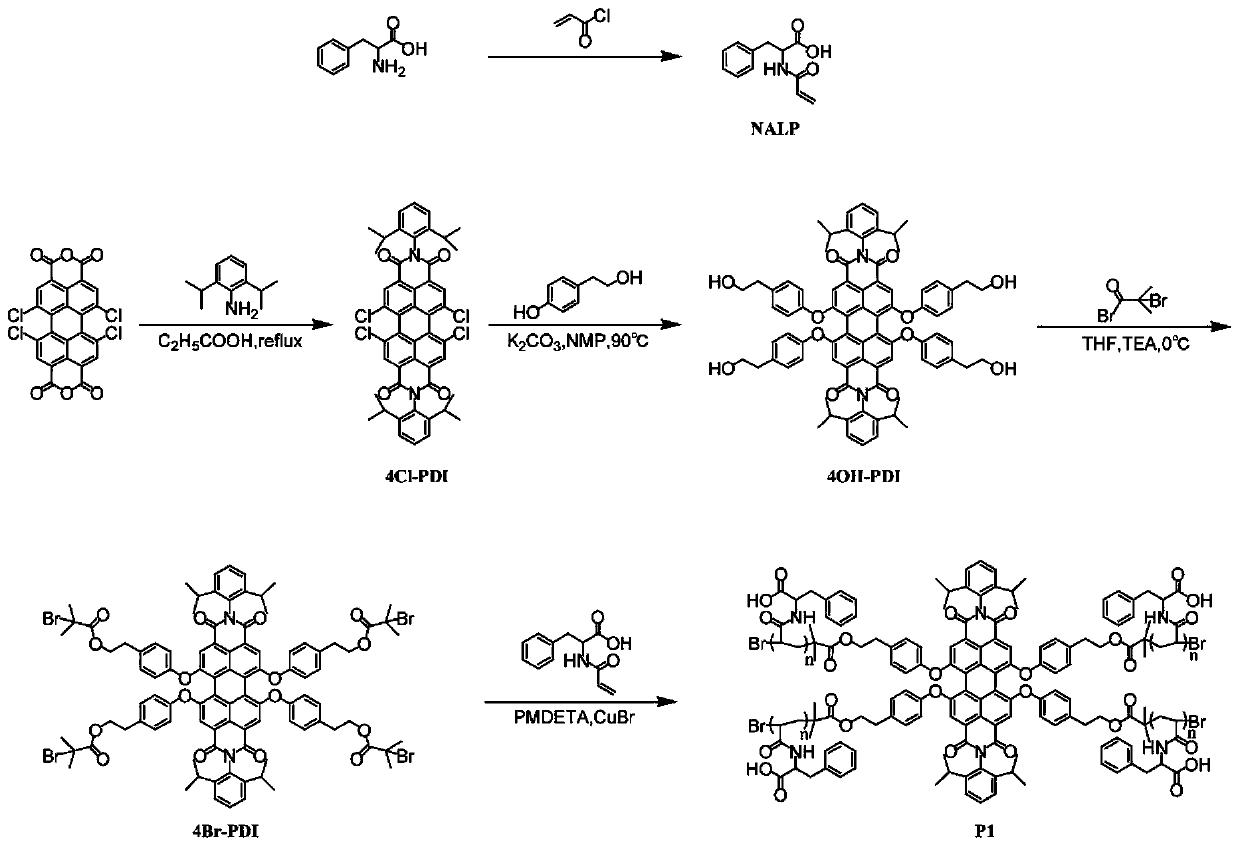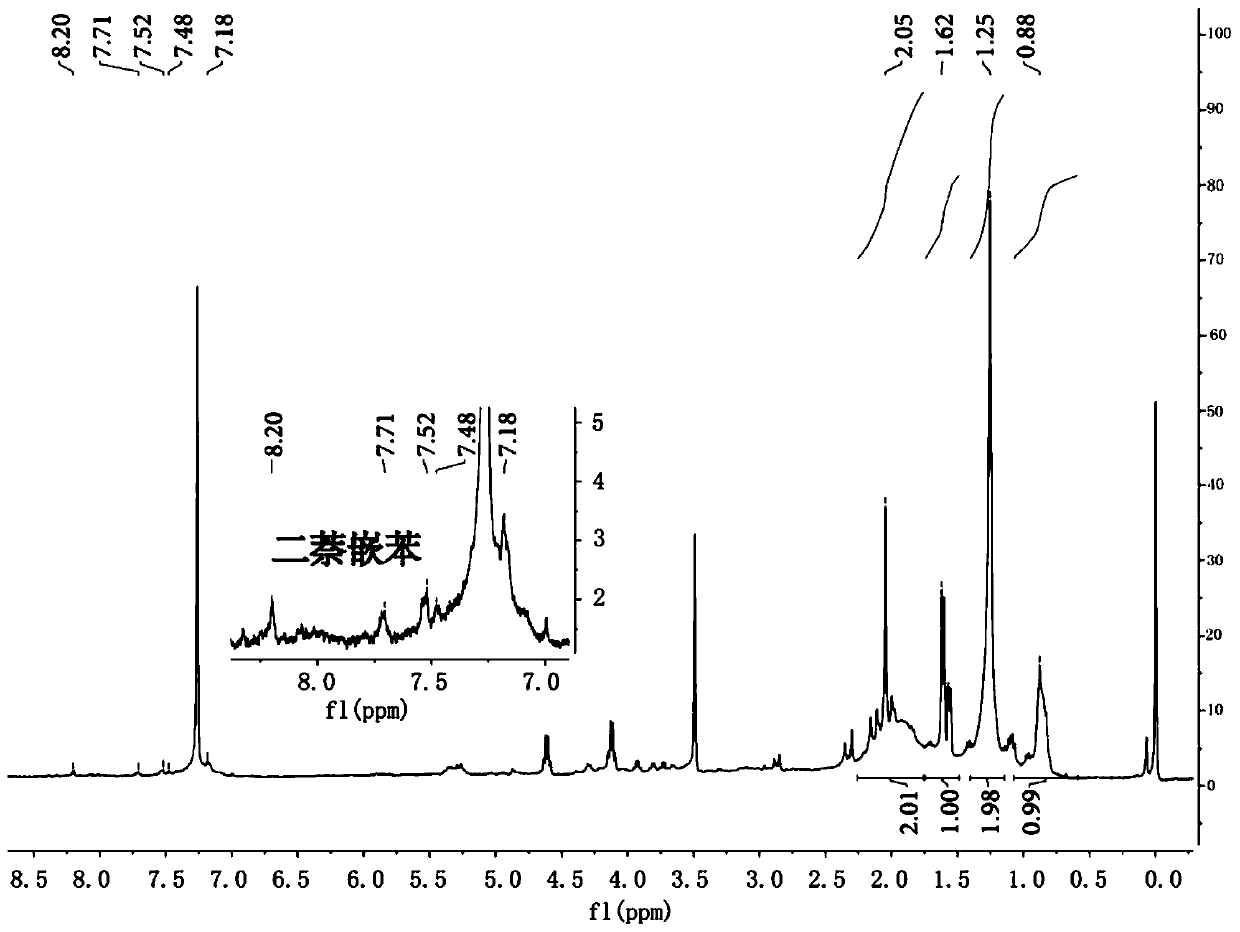Protein bioluminescence imaging sensor based on peryleneimide multi-arm polymer
A multi-arm polymer and imaging sensor technology, applied in the field of analytical chemistry, can solve the problems that the background matrix does not have the possibility of developing into a portable device, unfavorable sensor deviceization, etc., to avoid biological matrix interference, low cost, and specificity strong effect
- Summary
- Abstract
- Description
- Claims
- Application Information
AI Technical Summary
Problems solved by technology
Method used
Image
Examples
Embodiment 1
[0042] Example 1: Preparation of peryleneimide polymerized monomers.
[0043] (1) Preparation of N-acryloyl-L-phenylalanine (NALP): 3.3038g of phenylalanine (0.02mol), 0.01g of 2,6-di-tert-butyl-p-cresol, 0.8g of NaOH (0.02 mol) and 20 mL of distilled water were placed in a 100 mL round-bottomed flask to obtain a clear solution (pH 12), which was stirred in an ice bath, and 1.63 mL of acryloyl chloride (0.02 mol) was added dropwise to the solution. After the dropwise addition, the mixture was warmed to room temperature and stirred at room temperature for 1 hour. The clear aqueous solution was then acidified to pH 1-2 with concentrated hydrochloric acid. The precipitate was filtered and recrystallized, yield: 62%.
[0044] (2) N-acryloyl-L-serine (NALS), N-acryloyl-L-aspartic acid (NALA), N-acryloyl-L-leucine (NALL) and N-acryloyl-L -The preparation of histidine (NALH) uses 0.02mol of the corresponding amino acid as raw material, and follows the same preparation steps as NAL...
Embodiment 2
[0046] Example 2: Preparation of peryleneimide multi-arm polymers P1-P6.
[0047] Six peryleneimide multi-arm polymers, namely P1, P2, P3, P4, P5 and P6, are prepared as follows:
[0048] Preparation of P1: The polymerization was carried out in a strictly dry Schlenk tube, to which were added initiator 4Br-PDI (10 mg, 5.4 x 10-3 mmol, 1 equiv), NALP (508 mg, 2.16 mmol, 4 x 100 equiv) and butyl Ketone / methanol / water (2:1:1, 2.0 mL total). The reaction tube was degassed through three freeze-pump-thaw cycles, then pentamethyldivinyltriamine (77.8 mg, 0.45 mmol, 4 x 21 equiv) and CuBr (21.4 mg, 0.15 mmol, 4 x 7 equiv) were added. After stirring at room temperature for 10 minutes to ensure complete formation of the catalyst complex, the polymerization was carried out at 60°C under a nitrogen blanket. After 5 hours of reaction, the reaction was quenched with liquid nitrogen, the reaction mixture was poured into excess ether to precipitate, the precipitate was dissolved in water an...
Embodiment 3
[0060] Example 3: Peryleneimide multi-arm polymer-based protein bioluminescence imaging sensor
[0061] The overlap of the luciferase emission spectrum and the excitation spectrum of polymers P1-P6 is shown in the appendix Figure 9 A, the detection wavelength is 500-700nm band to detect the result of BRET signal as shown in Fig. Figure 9 shown in B.
[0062] A sensing unit is constructed, the sensing unit is a BRET acceptor peryleneimide multi-arm polymer and a BRET donor luciferase, and a titration method is used to determine the relationship between the BRET acceptor peryleneimide multi-arm polymer and the donor luciferase. The stoichiometric ratio of luciferase, the concentration of luciferase is constant, the concentration of polymer is gradually increased, and the change of BRET efficiency is recorded. When the curve becomes stable and no longer rises, the BRET efficiency at this point is the maximum BRET efficiency. Taking the stoichiometric ratio of BRET acceptor an...
PUM
 Login to View More
Login to View More Abstract
Description
Claims
Application Information
 Login to View More
Login to View More - R&D
- Intellectual Property
- Life Sciences
- Materials
- Tech Scout
- Unparalleled Data Quality
- Higher Quality Content
- 60% Fewer Hallucinations
Browse by: Latest US Patents, China's latest patents, Technical Efficacy Thesaurus, Application Domain, Technology Topic, Popular Technical Reports.
© 2025 PatSnap. All rights reserved.Legal|Privacy policy|Modern Slavery Act Transparency Statement|Sitemap|About US| Contact US: help@patsnap.com



